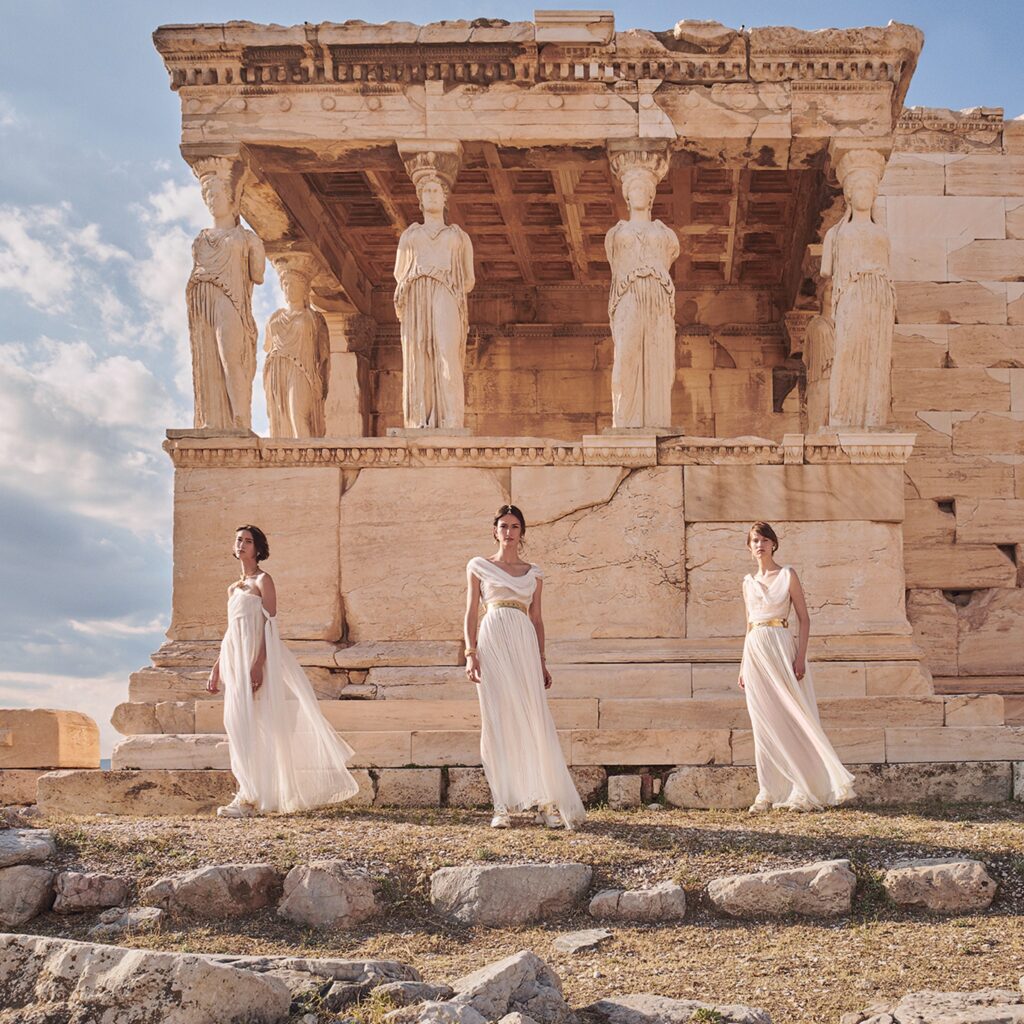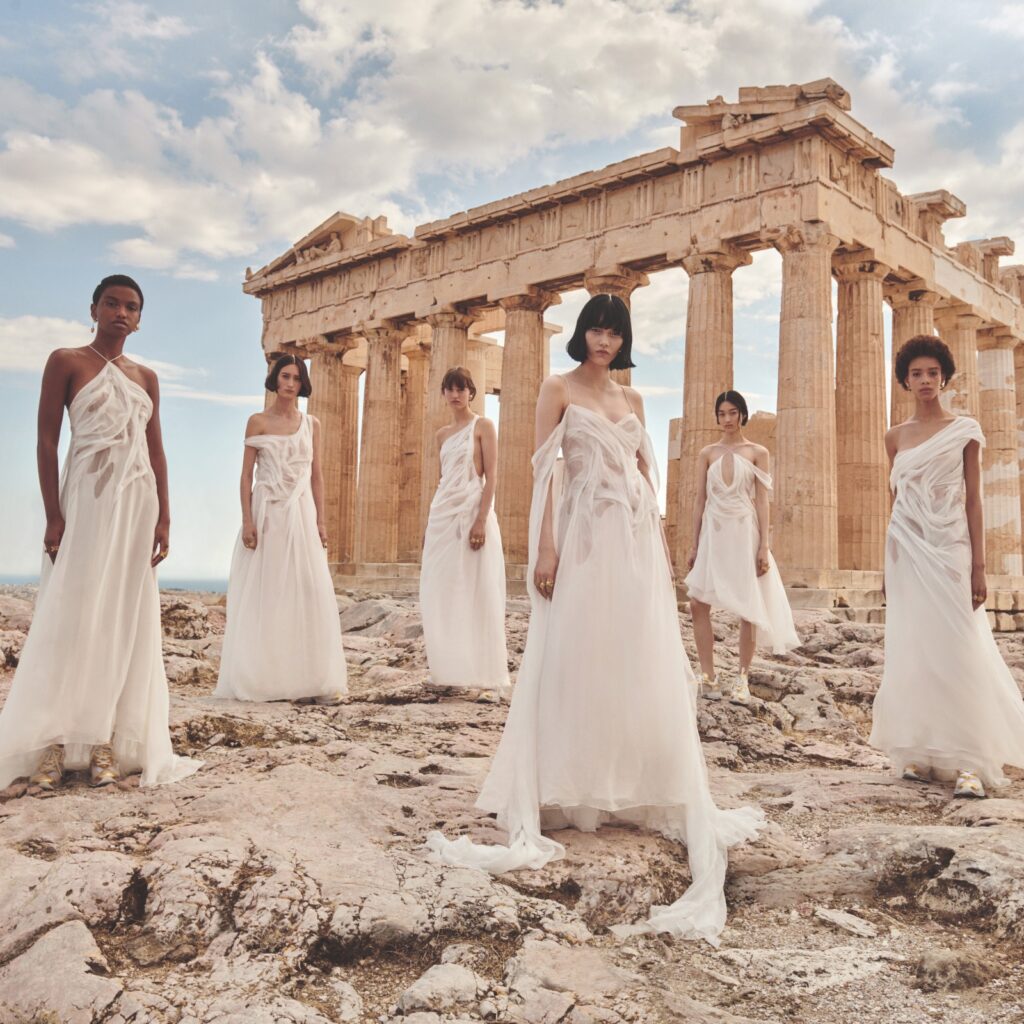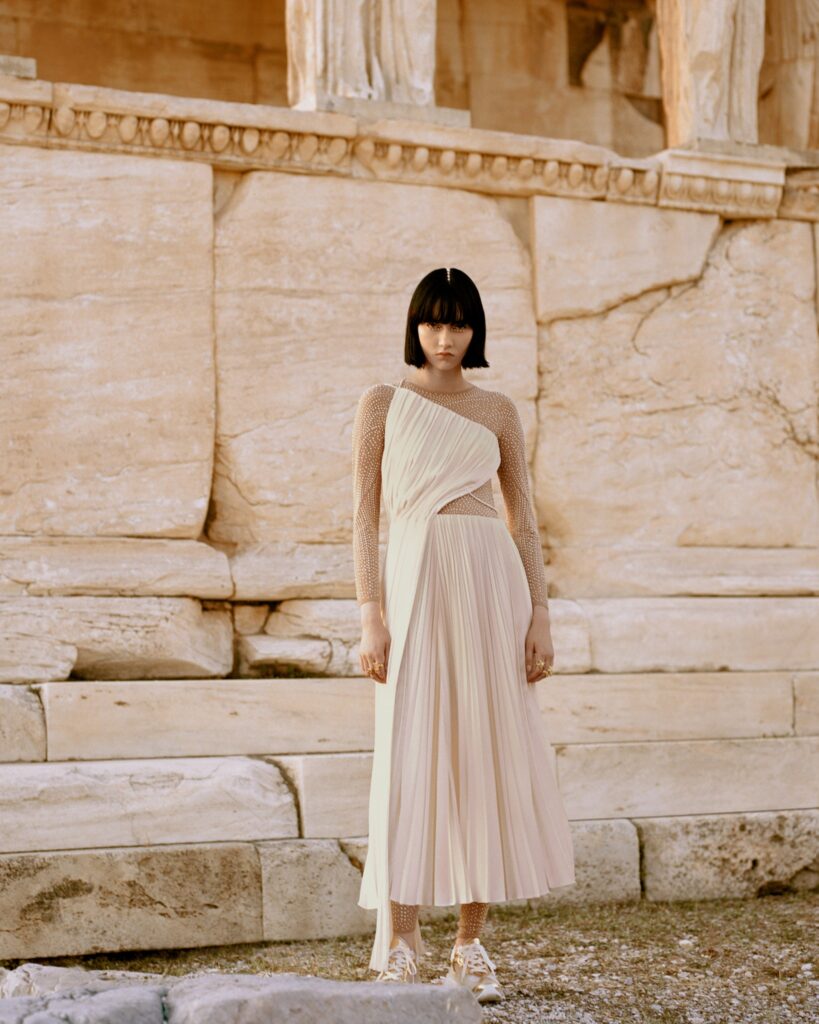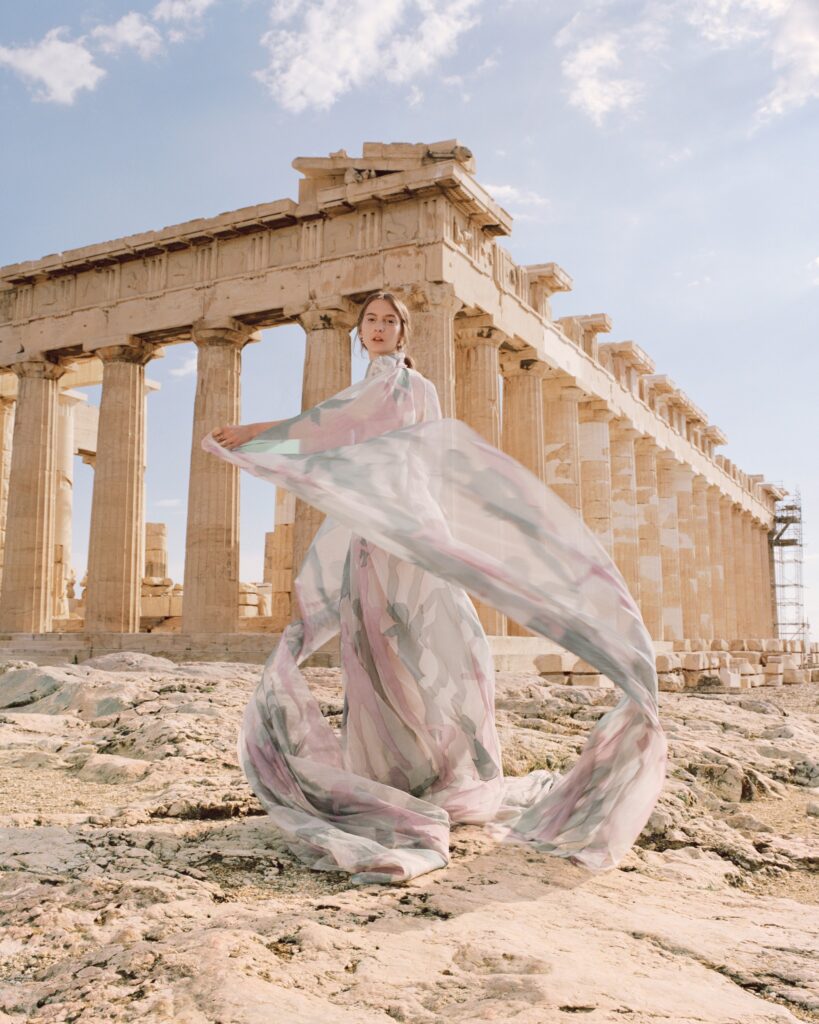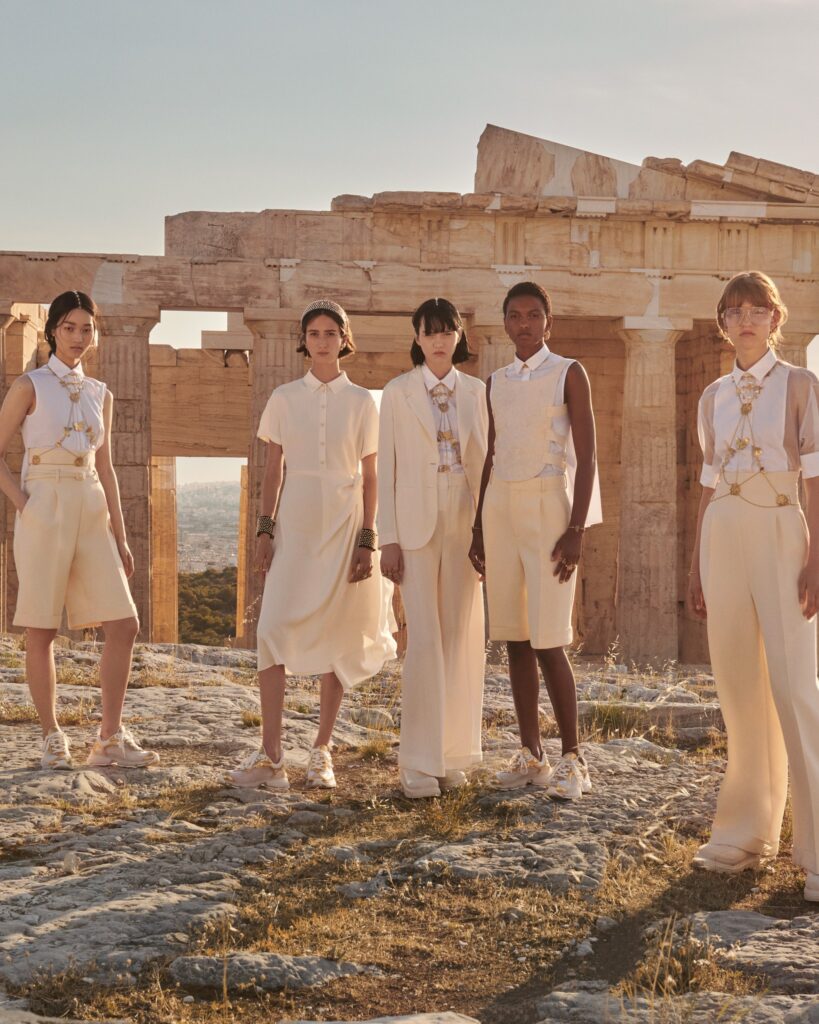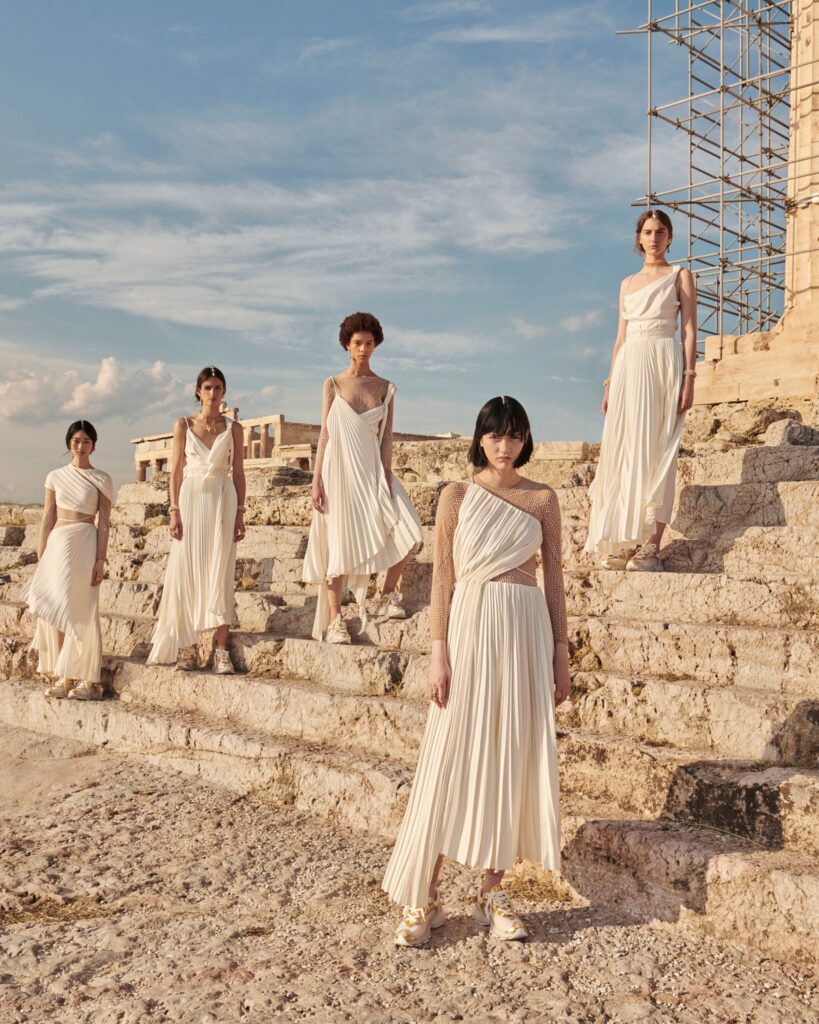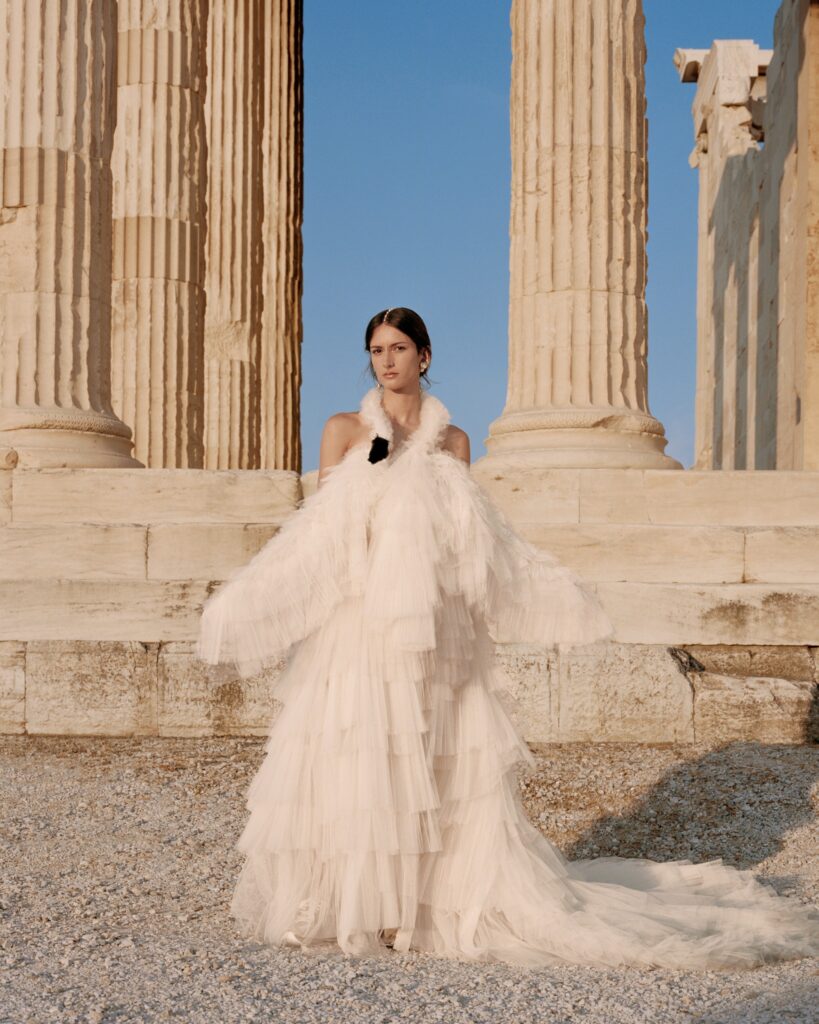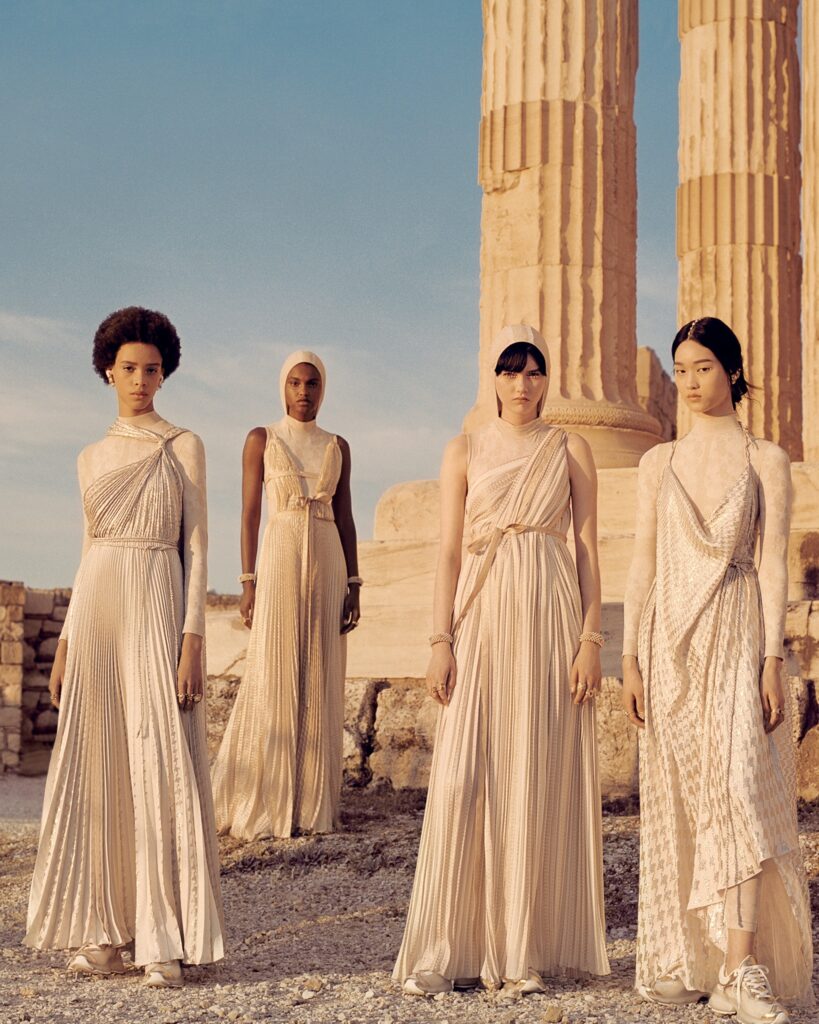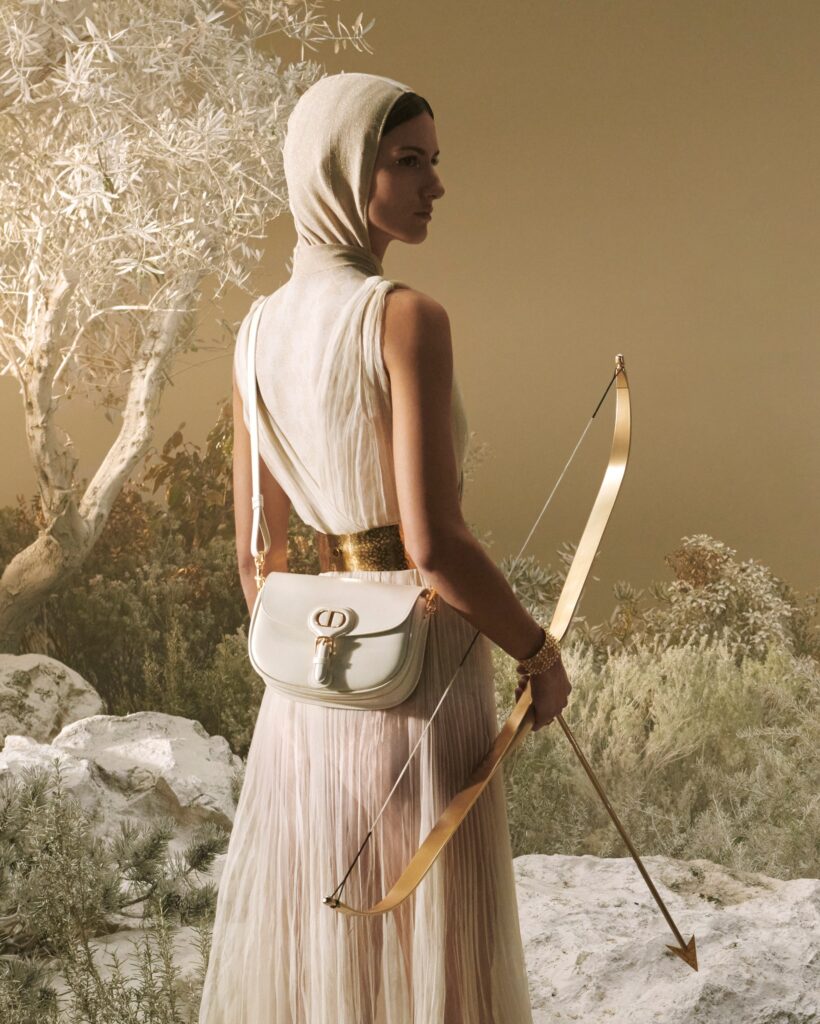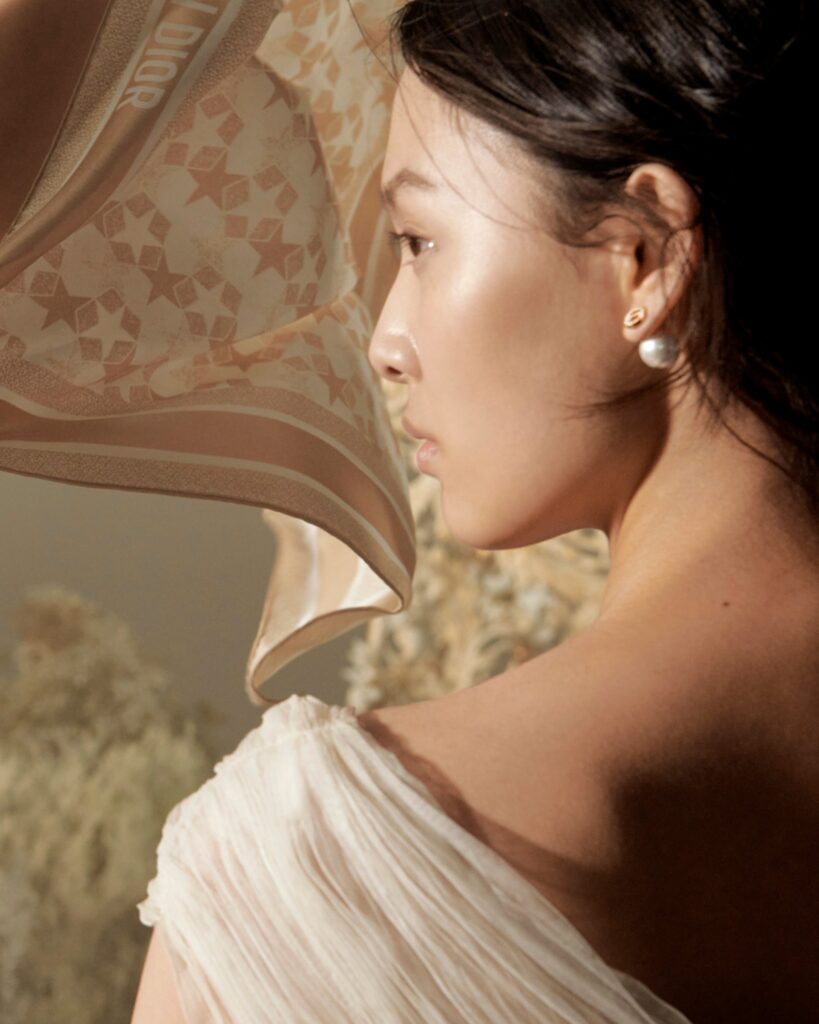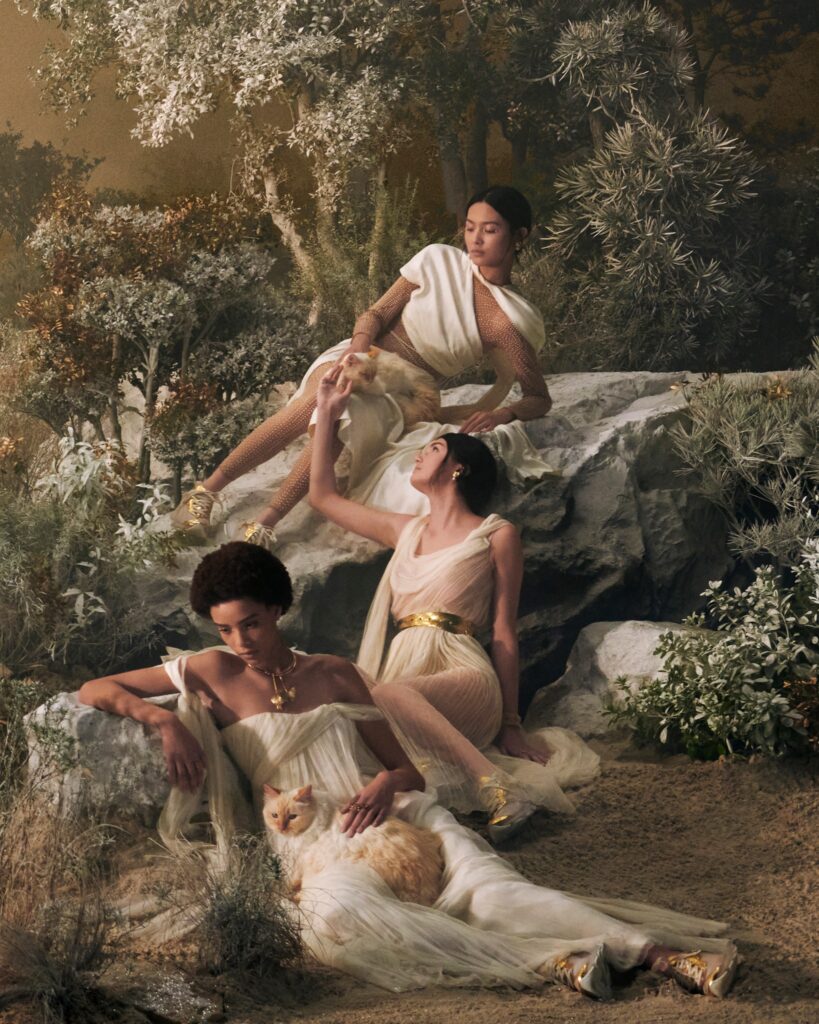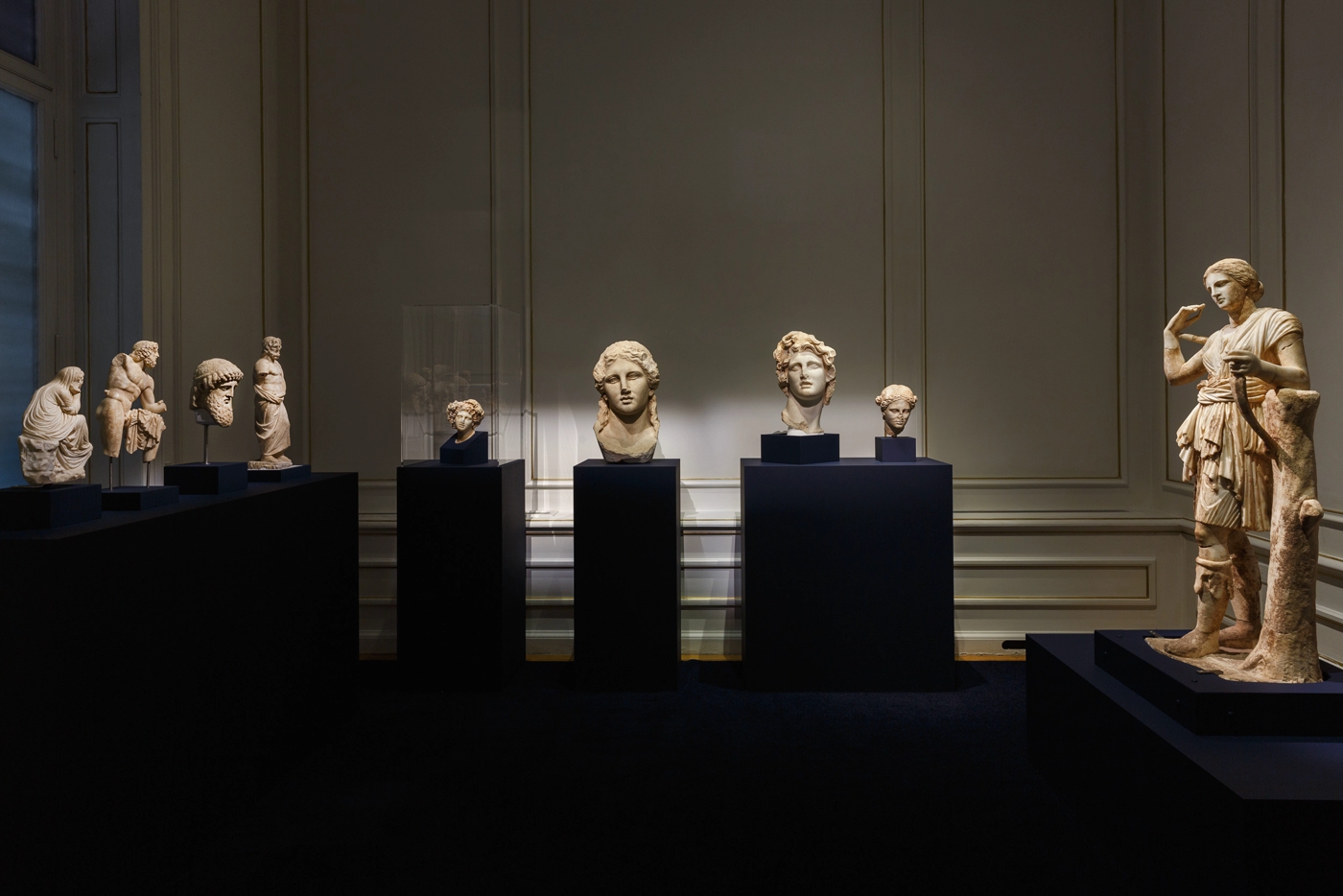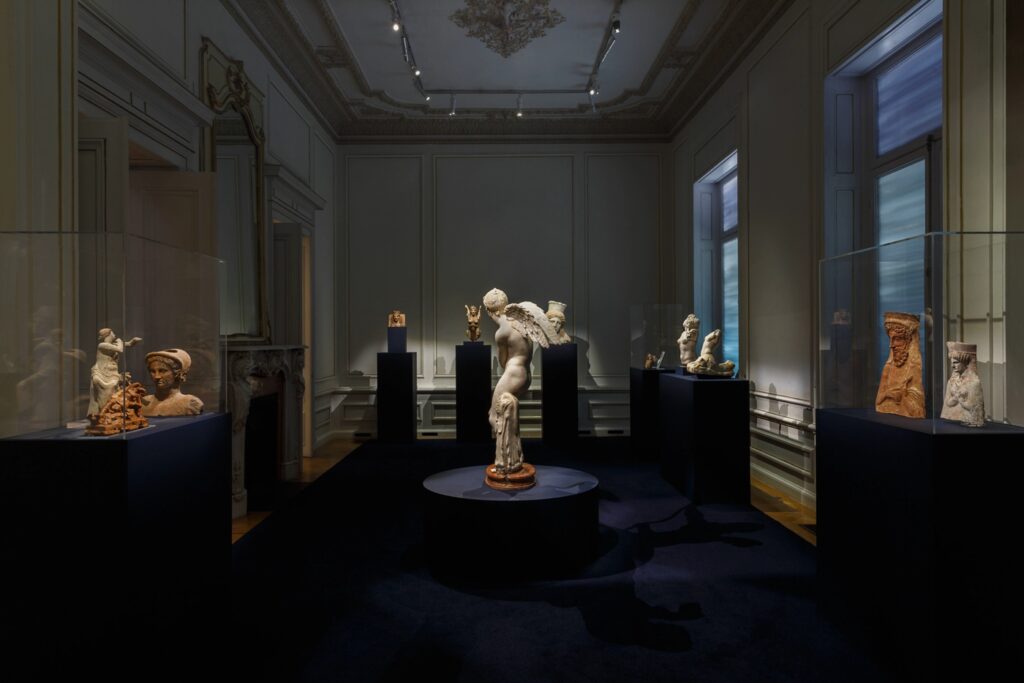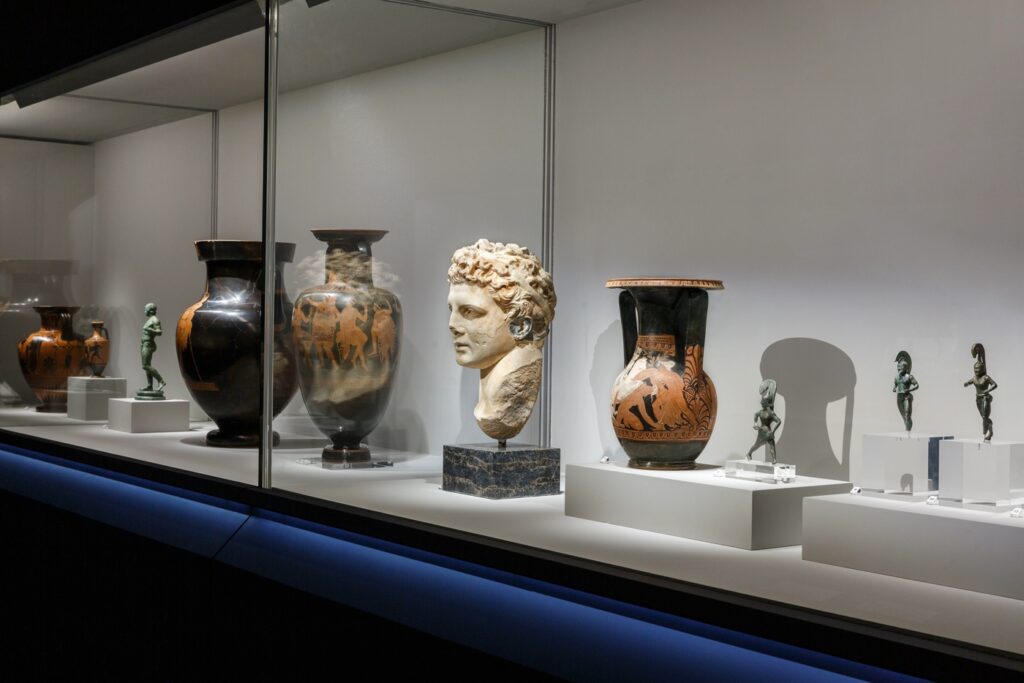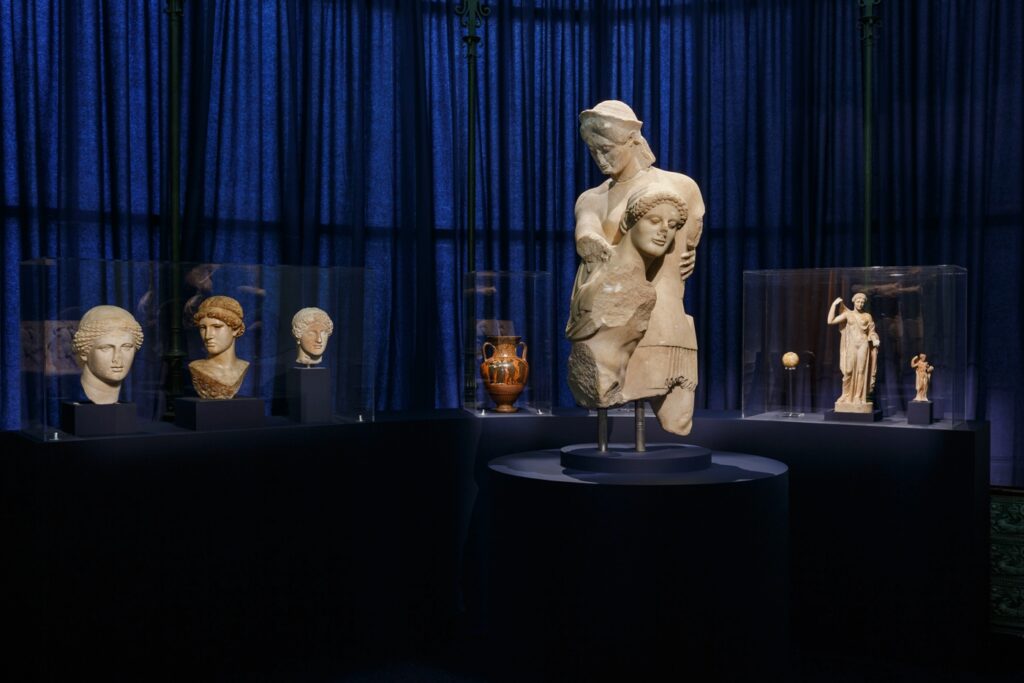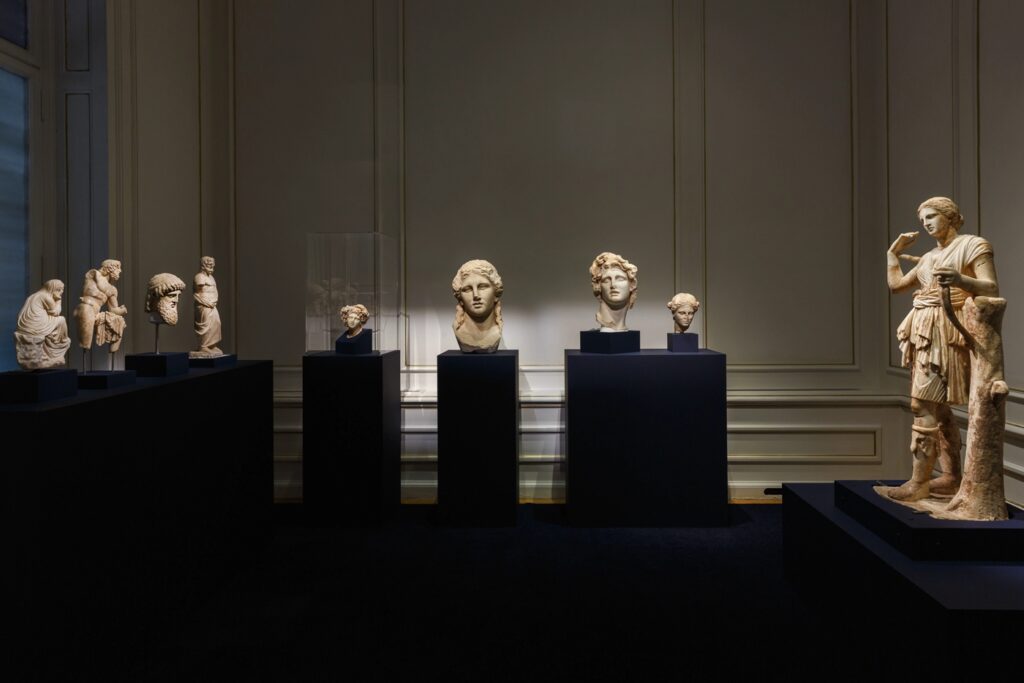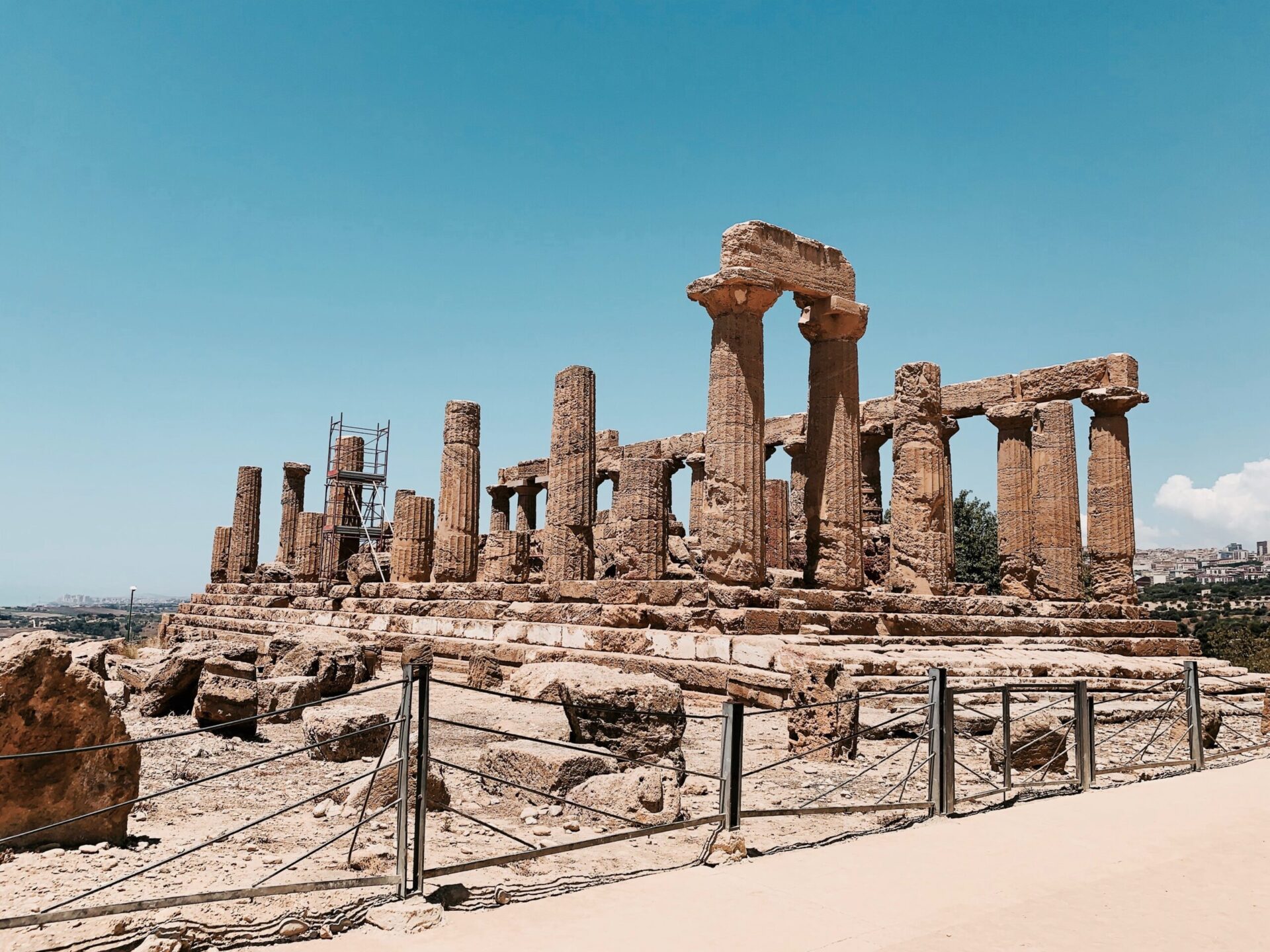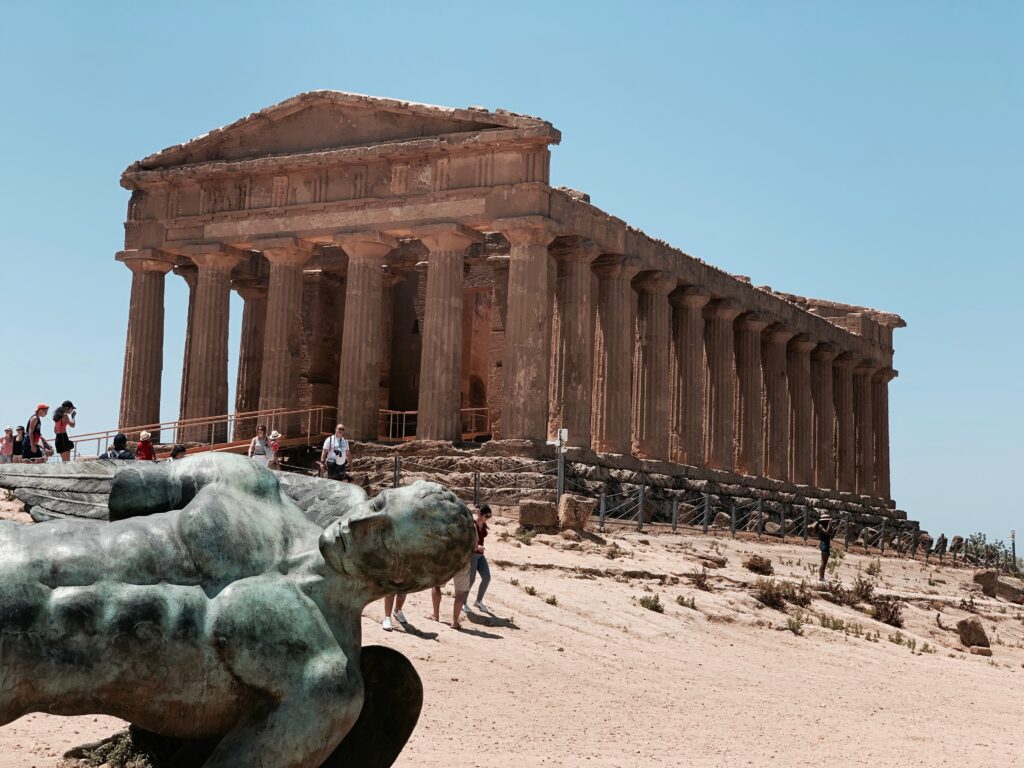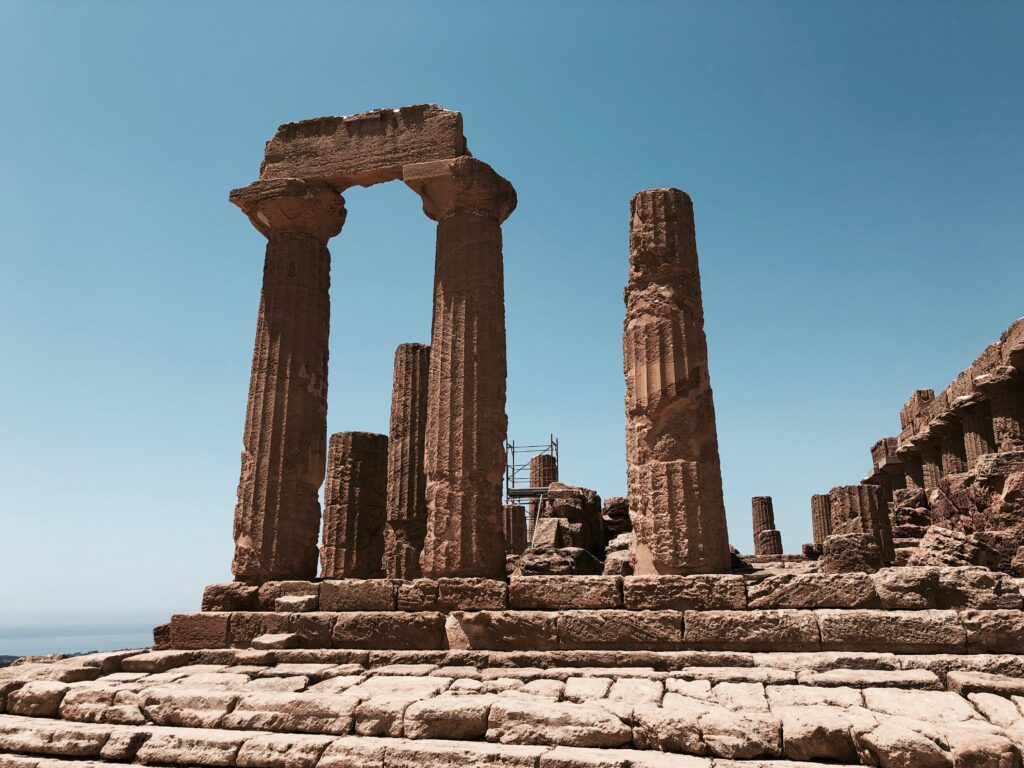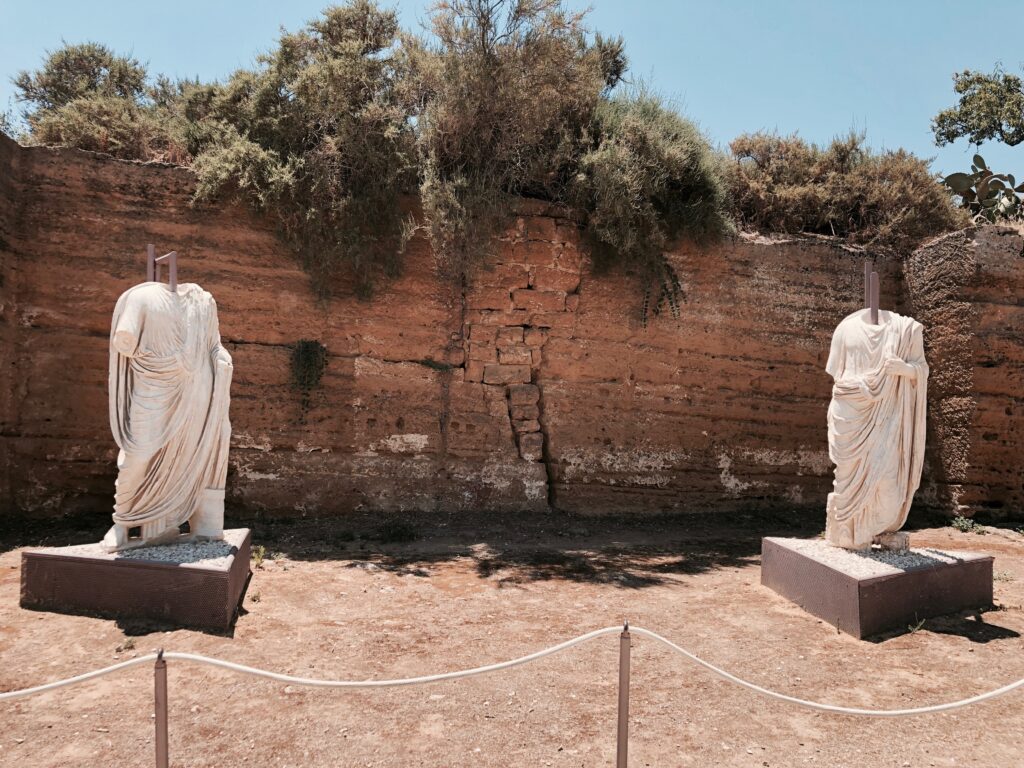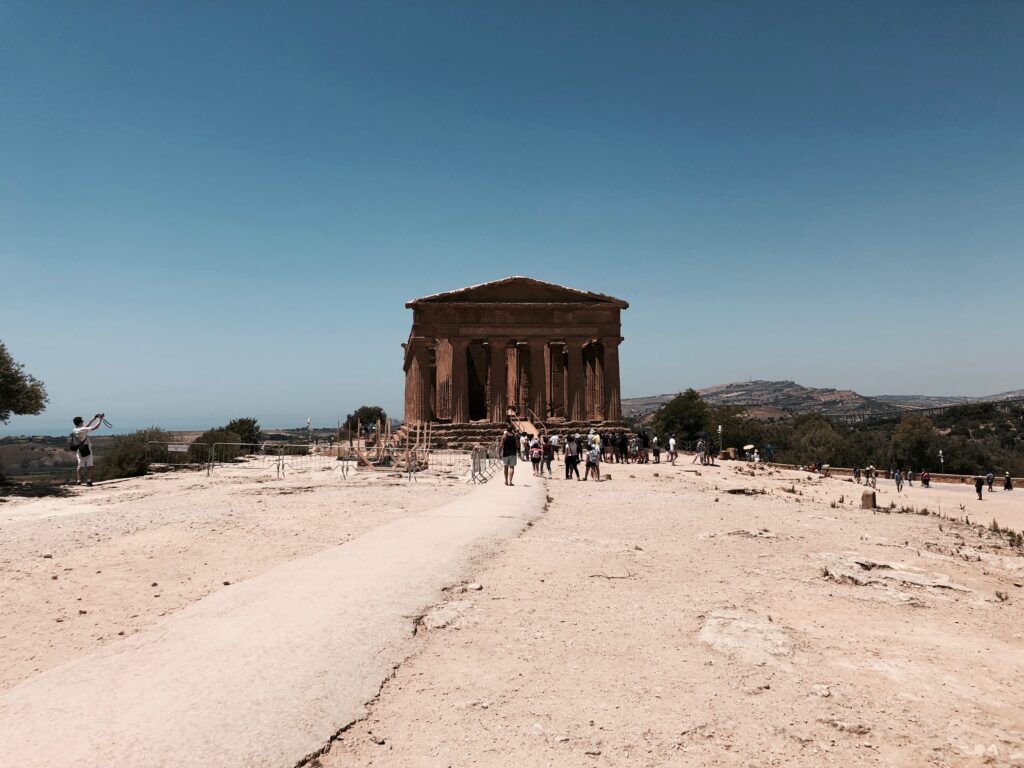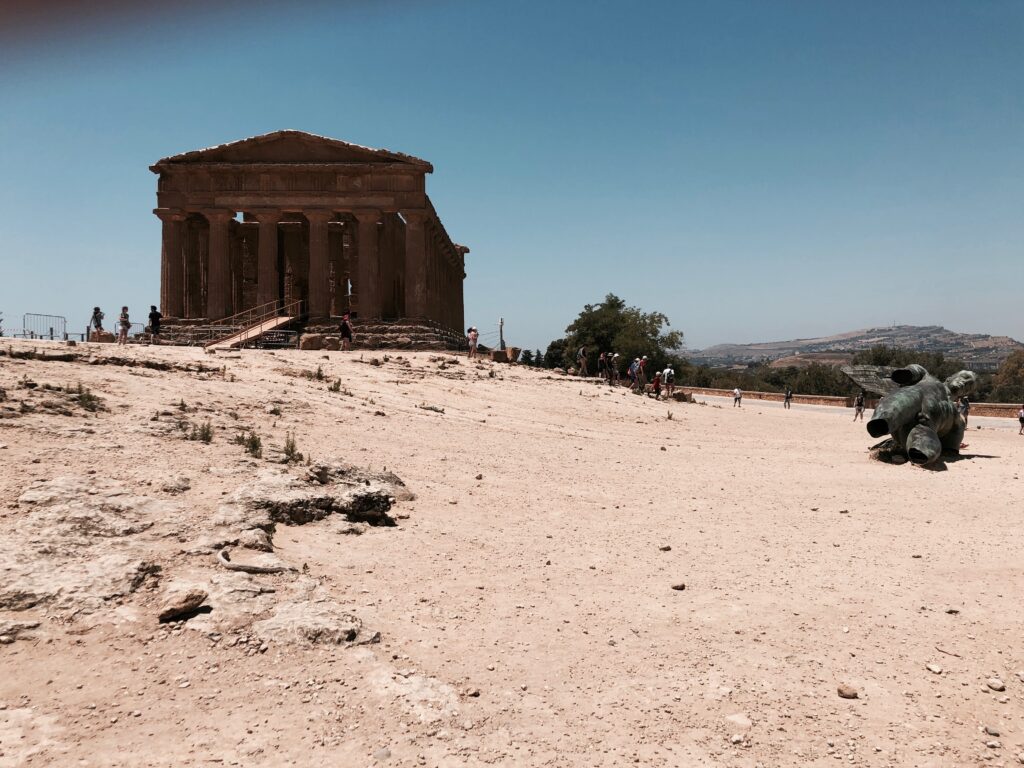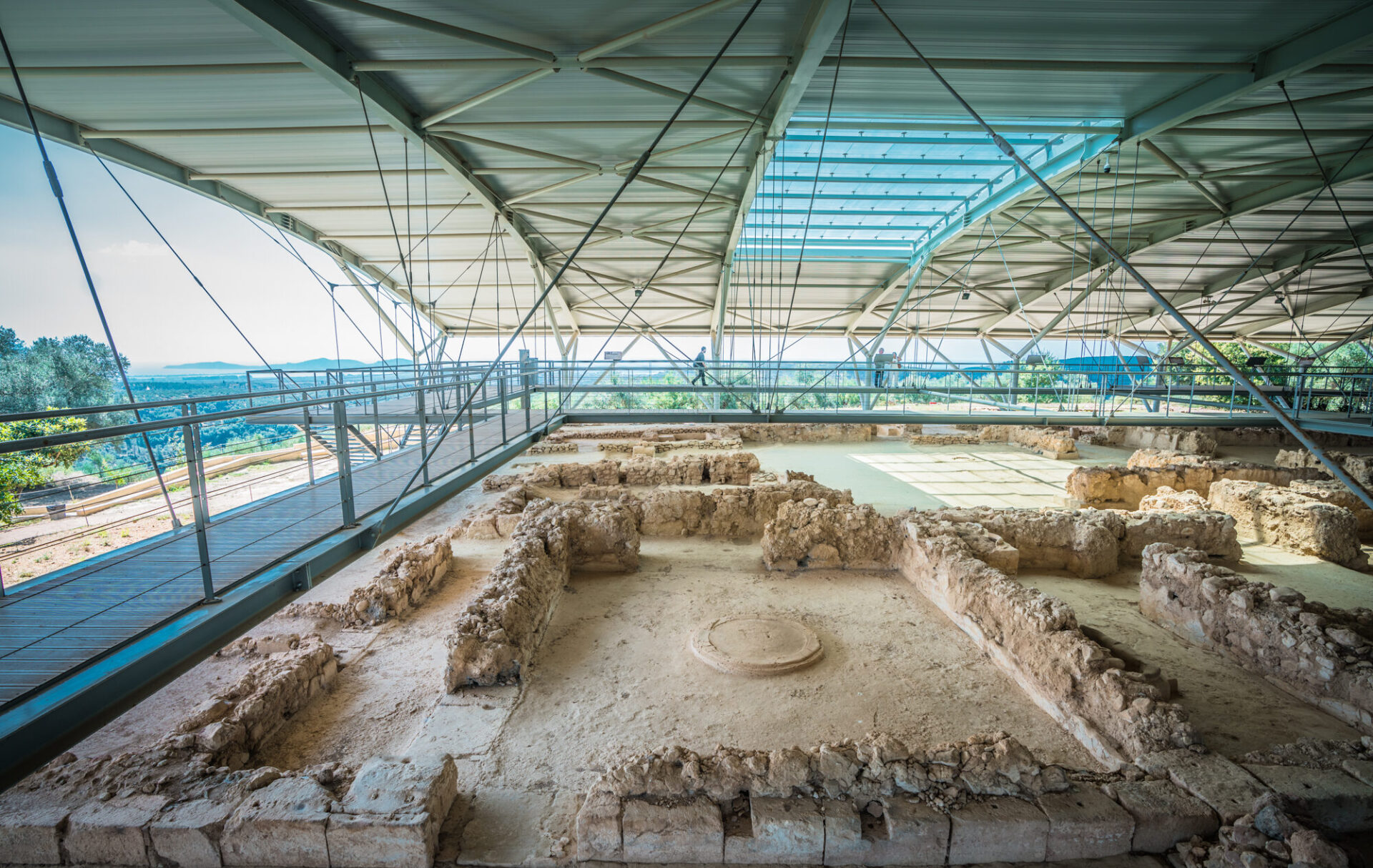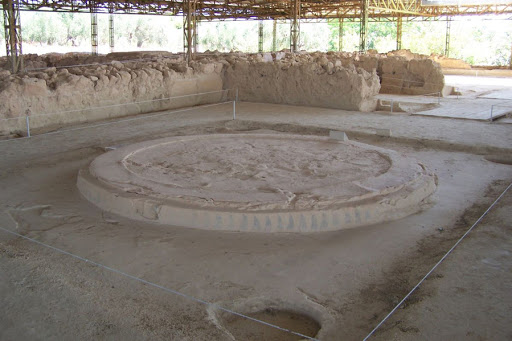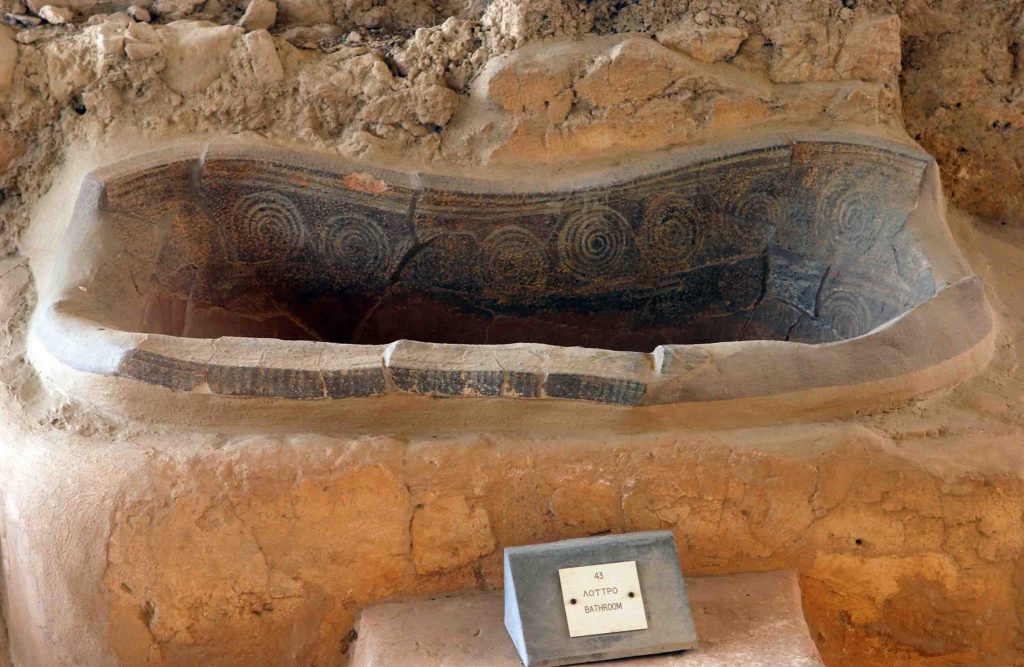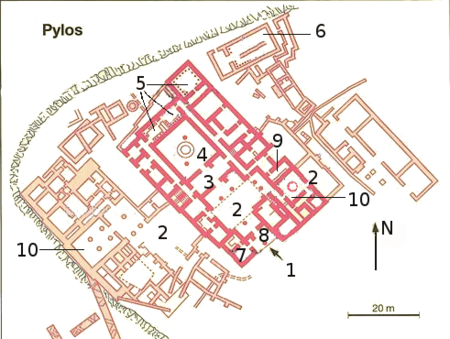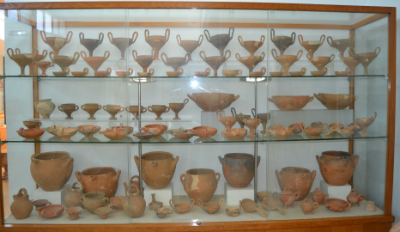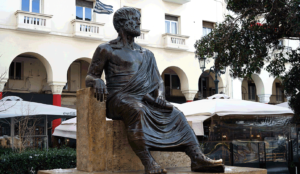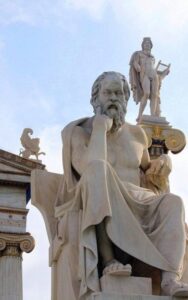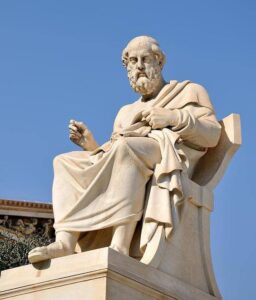Dior has just released its latest Cruise 2022 Collection campaign, celebrating Greece’s past and present, while putting the spotlight on the Ancient Greek peplos gown- the main source of inspiration for Dior’s entire range created by Maria Grazia Chiuri.
“Dior celebrates Greece by returning to the inspirational origins of the Cruise 2022 collection by Maria Grazia Chiuri. In a campaign being unveiled in newspapers around the world, the House perpetuates its close links to the country from its classical past to contemporary present, which included a famous shoot held on the Acropolis in 1951 featuring models in gowns by the founding couturier,” announced Dior.
“That legacy is honored in images shot at the same location, highlighting the rapport with the marble statuary and its draped dresses, translated into myriad modern interpretations of the peplos gown, and looks in a pale palette lifted with the golden glow of ‘Dior Sea Garden’ jewels and ‘Dior Vibe’ sneakers,” added the luxury brand.
A draped, outer garment made of a single piece of cloth that was worn by women in Ancient Greece, a peplos is long, loose-fitting, and held up with pins at the shoulder, and most often featured a belt at the waist; while its top edge was folded over to create a flap.
Revealed in the millennia-old magnificence of the Acropolis in Athens, the collection highlights the art, costume, culture, and craft of Greece’s past and present as inspiration for the collection, with the timeless femininity of reinterpreted peplos gowns and more modern separates and tailoring in a color palette drawn from marble statuary.
Dior has also released its Festive Season campaign for the Cruise 2022 collection, with Grecian inspirations exquisitely evoked in images by Elina Kechicheva.
Captured amongst Christmas inspired scenery, models are draped in modern interpretations of peplos dresses and Dior silk scarves as they display a range of timeless accessories; including classic gold jewellery (earrings, bracelets, rings), bags (totes, pouches, clutches) shoes (slides, sneakers, espadrilles) and more.
All images courtesy of Dior
© Hellenic Ministry of Culture and Sports
Ephorate of Antiquities of the City of Athens
© Ria Mort
Jean-Pierre Pedrazzini / Paris-Match / La Scoop
Hellenic Ministry of Culture and Sports
Ephorate of Antiquities of the City of Athens


